Eating from the Tree of Life: A Course on the Zohar (1)
ZOHAR AND KABBALAH: A CRASH COURSE
(1 of 4)
Introduction
The Zohar, the Book of Radiance, is revered, even feared, but rarely studied. Yet it is an exhilirating and challenging text, as compelling today as when it became known in thirteenth-century Spain. This course is an invitation to explore the Zohar from a liberal Jewish religious perspective. It includes introductory essays on Zohar study, and a selection of texts translated from the Zohar, with brief commentaries, as well as recommendations for further reading. You are invited to begin with either the introductory material or the texts, and move back and forth between them. There is also a bulletin board for your questions and insights.
WHAT THE ZOHAR IS
Reading the Zohar is entering a dream-world where boundaries shift and dissolve, an exploration of the self and of reality itself which can be both disturbing and exhilirating. While advocating a traditional Jewish life of learning and observance, it challenges our most basic assumptions about Judaism or any conventional religion. We will approach the Zohar as a high point of the traditions of Midrash (imaginative Biblical interpretation) and mysticism, and as a resource for our own questing and creativity.
The Zohar is the central book of Kabbalah, a Jewish mystical tradition which also has Christian and occult offshoots. But it is more than that, and it is possible to be nourished by the Zohar without being interested in Kabbalah or deeply knowledgeable about Judaism.
The word zohar is Hebrew for "radiance" or "splendour" or perhaps "enlightenment". The Zohar, the book, is a long work -- at least three large volumes, more than a dozen when a commentary is included. It is a kind of midrash, an imaginative commentary on the Torah, in which any verse or word can inspire pages of teachings and stories. It has also been called the first modern novel, because its interpretations of the Torah are placed in the mouths of characters, a circle of rabbis, and interspersed with stories about the rabbis and their travels and adventures.
The language of the Zohar is not the Hebrew of the Bible and most Jewish books, but a simple form of Aramaic, the language of the Talmud. The grammar is iffy, and the vocabulary is mixed with medieval Hebrew and occasionally Spanish, which have helped academic scholars make their case that the Zohar was written in Spain, where it first became known, in the late 1200s. Traditional Kabbalists, nevertheless, believe that it was written more than a thousand years earlier, by the rabbis mentioned in it, whose names are known from the Mishnah and Talmud.
Since its first appearance in Spain the Zohar has been associated with a rabbi named Moshe de Leon. Skeptics in his own time, and scholars more recently, have considered him to be the author. A more recent theory, developed by Yehudah Liebes, helps to make sense of the disagreements and divergent points of view found in the Zohar. The theory is that de Leon belonged to a fellowship of Kabbalists, who wrote the Zohar together as a literary version of their own adventures and Torah discussions.
The Zohar circulated at first in manuscripts, with no fixed order; it was finally arranged according to the weekly portions of the Torah and put into print toward the end of the 1500s. Bit by bit, it had been accepted as a holy work, because it was thought to be ancient and because of the power of its dreamlike images and radical ideas. It became the central text of the Kabbalistic tradition; great Kabbalists such as the Ari (Rabbi Isaac Luria, 16th century) presented their new ideas in the form of commentaries on the Zohar. Christian and occultist students of Kabbalah celebrated it as well. By the seventeenth and eighteenth centuries, the Zohar was accepted by many Jews as a holy book on the level of the Bible and the Talmud. Its prestige declined with the wave of rationalism in the nineteenth and twentieth centuries. Still, today, the Zohar is revered in many traditional religious communities, especially among Sephardim and Hasidim. In liberal communities, more and more people are discovering the Zohar as a spiritual treasure.
A LIBERAL PERSPECTIVE
From a liberal (non-Orthodox) Jewish perspective, in which truth is not easily pinned down, no book, not even the Bible, has absolute authority for us. This course will not claim that the Zohar is true, and you are invited to feel free to disagree with it. At the same time we will try to follow a great principle of all serious study, which I learned from my teacher Rabbi Michael Skobac: you don't have to agree with the text, but you do have to try to understand it.
Actually, knowing that we do not have to agree with something frees us to truly understand it. We are all attached to our own ideas and outlooks, and it is a great temptation to misread texts, or people, as if they are only telling us what we already believe. Therefore, finding that you disagree with a text is often a good sign that you are understanding it correctly, and not forcing it into your own perspective.
My teacher Rabbi David Greenstein points out that the communities which revere the Zohar rarely study it in its own terms. In some communities, there is a spiritual practice of chanting the Zohar without attempting to understand its words; in others, it is studied only through the commentaries of later Kabbalists who overlaid it with their own ideas. Paradoxically, since we approach the Zohar with less reverence, with the freedom to disagree, we can try to read it on its own terms, to understand what it actually says.
At the same time, we want the Zohar to be useful to us, as a resource for our own lives, a model for our own quest. Therefore, we will feel free to reinterpret it, to build ideas on its ideas, to rework its ideas and images to make them meaningful to us. Ideally, understanding the text comes first, then reinterpreting and working with it. In practice, the two processes inevitably go on simultaneously and get mixed up, but it is useful to at least be aware that both are going on. The best moments of study happen, unpredictably, when both come together, when a sound grasp of what the text is actually saying opens new doors for us to go through on our own.
(1 of 4)
Introduction
The Zohar, the Book of Radiance, is revered, even feared, but rarely studied. Yet it is an exhilirating and challenging text, as compelling today as when it became known in thirteenth-century Spain. This course is an invitation to explore the Zohar from a liberal Jewish religious perspective. It includes introductory essays on Zohar study, and a selection of texts translated from the Zohar, with brief commentaries, as well as recommendations for further reading. You are invited to begin with either the introductory material or the texts, and move back and forth between them. There is also a bulletin board for your questions and insights.
WHAT THE ZOHAR IS
Reading the Zohar is entering a dream-world where boundaries shift and dissolve, an exploration of the self and of reality itself which can be both disturbing and exhilirating. While advocating a traditional Jewish life of learning and observance, it challenges our most basic assumptions about Judaism or any conventional religion. We will approach the Zohar as a high point of the traditions of Midrash (imaginative Biblical interpretation) and mysticism, and as a resource for our own questing and creativity.
The Zohar is the central book of Kabbalah, a Jewish mystical tradition which also has Christian and occult offshoots. But it is more than that, and it is possible to be nourished by the Zohar without being interested in Kabbalah or deeply knowledgeable about Judaism.
The word zohar is Hebrew for "radiance" or "splendour" or perhaps "enlightenment". The Zohar, the book, is a long work -- at least three large volumes, more than a dozen when a commentary is included. It is a kind of midrash, an imaginative commentary on the Torah, in which any verse or word can inspire pages of teachings and stories. It has also been called the first modern novel, because its interpretations of the Torah are placed in the mouths of characters, a circle of rabbis, and interspersed with stories about the rabbis and their travels and adventures.
The language of the Zohar is not the Hebrew of the Bible and most Jewish books, but a simple form of Aramaic, the language of the Talmud. The grammar is iffy, and the vocabulary is mixed with medieval Hebrew and occasionally Spanish, which have helped academic scholars make their case that the Zohar was written in Spain, where it first became known, in the late 1200s. Traditional Kabbalists, nevertheless, believe that it was written more than a thousand years earlier, by the rabbis mentioned in it, whose names are known from the Mishnah and Talmud.
Since its first appearance in Spain the Zohar has been associated with a rabbi named Moshe de Leon. Skeptics in his own time, and scholars more recently, have considered him to be the author. A more recent theory, developed by Yehudah Liebes, helps to make sense of the disagreements and divergent points of view found in the Zohar. The theory is that de Leon belonged to a fellowship of Kabbalists, who wrote the Zohar together as a literary version of their own adventures and Torah discussions.
The Zohar circulated at first in manuscripts, with no fixed order; it was finally arranged according to the weekly portions of the Torah and put into print toward the end of the 1500s. Bit by bit, it had been accepted as a holy work, because it was thought to be ancient and because of the power of its dreamlike images and radical ideas. It became the central text of the Kabbalistic tradition; great Kabbalists such as the Ari (Rabbi Isaac Luria, 16th century) presented their new ideas in the form of commentaries on the Zohar. Christian and occultist students of Kabbalah celebrated it as well. By the seventeenth and eighteenth centuries, the Zohar was accepted by many Jews as a holy book on the level of the Bible and the Talmud. Its prestige declined with the wave of rationalism in the nineteenth and twentieth centuries. Still, today, the Zohar is revered in many traditional religious communities, especially among Sephardim and Hasidim. In liberal communities, more and more people are discovering the Zohar as a spiritual treasure.
A LIBERAL PERSPECTIVE
From a liberal (non-Orthodox) Jewish perspective, in which truth is not easily pinned down, no book, not even the Bible, has absolute authority for us. This course will not claim that the Zohar is true, and you are invited to feel free to disagree with it. At the same time we will try to follow a great principle of all serious study, which I learned from my teacher Rabbi Michael Skobac: you don't have to agree with the text, but you do have to try to understand it.
Actually, knowing that we do not have to agree with something frees us to truly understand it. We are all attached to our own ideas and outlooks, and it is a great temptation to misread texts, or people, as if they are only telling us what we already believe. Therefore, finding that you disagree with a text is often a good sign that you are understanding it correctly, and not forcing it into your own perspective.
My teacher Rabbi David Greenstein points out that the communities which revere the Zohar rarely study it in its own terms. In some communities, there is a spiritual practice of chanting the Zohar without attempting to understand its words; in others, it is studied only through the commentaries of later Kabbalists who overlaid it with their own ideas. Paradoxically, since we approach the Zohar with less reverence, with the freedom to disagree, we can try to read it on its own terms, to understand what it actually says.
At the same time, we want the Zohar to be useful to us, as a resource for our own lives, a model for our own quest. Therefore, we will feel free to reinterpret it, to build ideas on its ideas, to rework its ideas and images to make them meaningful to us. Ideally, understanding the text comes first, then reinterpreting and working with it. In practice, the two processes inevitably go on simultaneously and get mixed up, but it is useful to at least be aware that both are going on. The best moments of study happen, unpredictably, when both come together, when a sound grasp of what the text is actually saying opens new doors for us to go through on our own.
Labels: God, Jewish mysticism, Judaism, Kabbalah, Zohar
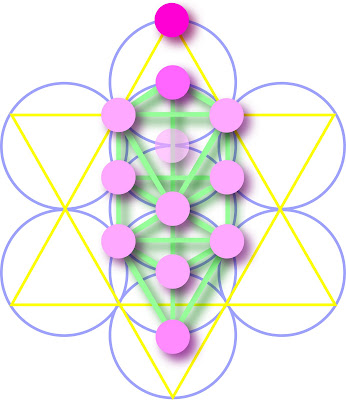

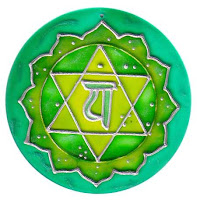

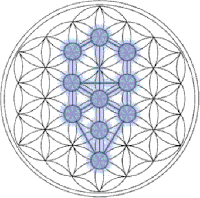

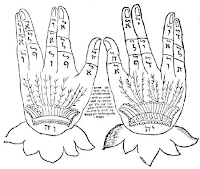

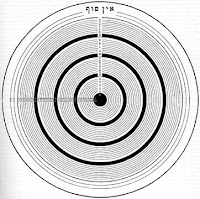
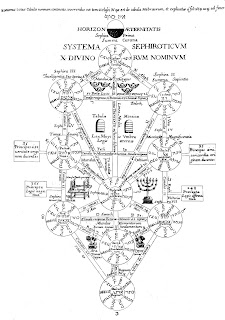
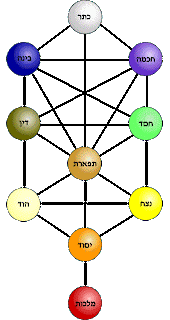
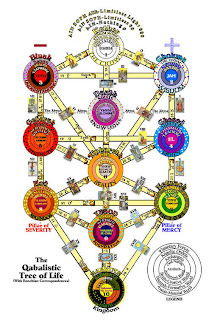


0 Comments:
Post a Comment
Subscribe to Post Comments [Atom]
<< Home